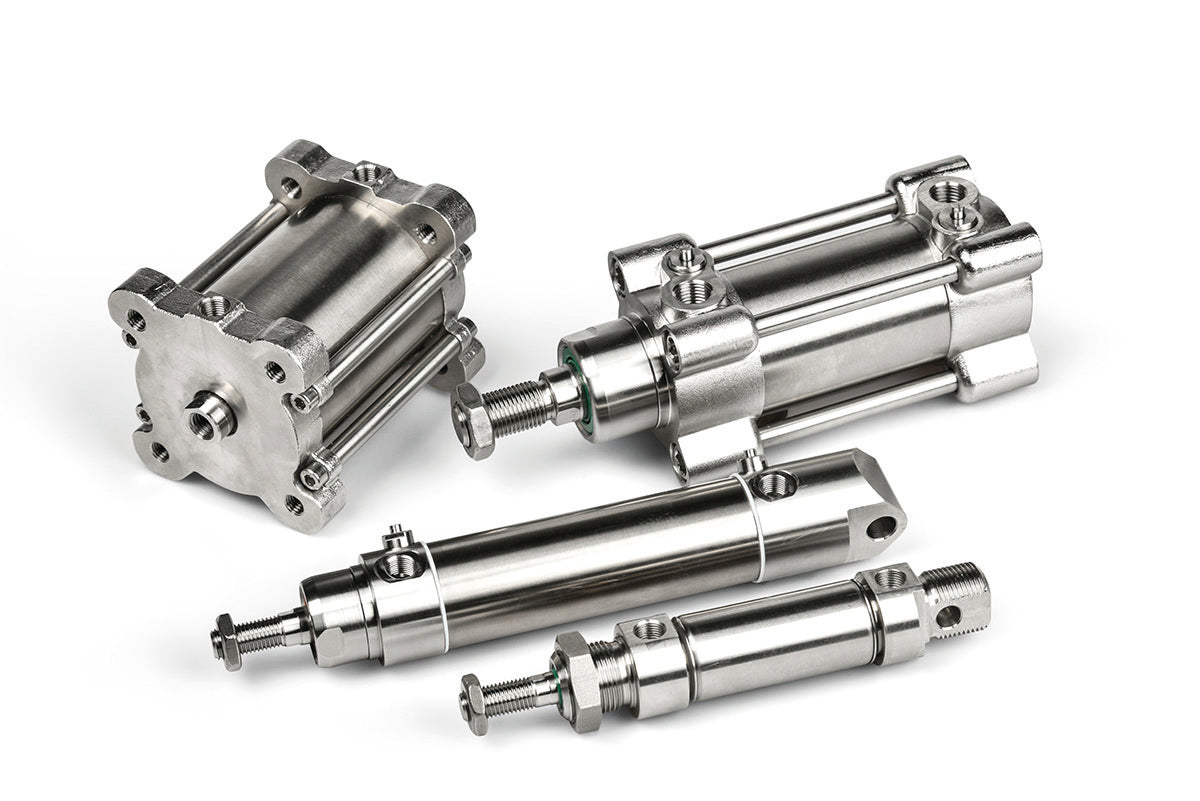

3A Automation
Pneumatic Cylinders
Pneumatic Cylinders: Powering Automation with Air
Pneumatic cylinders are fundamental components in industrial automation, converting the energy of compressed air into linear motion. Their simplicity, reliability, and cost-effectiveness make them an indispensable choice across countless industries, from manufacturing and packaging to robotics and material handling.
This guide will explore the world of pneumatic cylinders, covering their operational principles, various types, key advantages, and diverse applications.

What Exactly are Pneumatic Cylinders?
A pneumatic cylinder, often referred to as an air cylinder, is a mechanical device that utilizes the power of compressed gas (typically air) to produce a force in a reciprocating linear motion. Essentially, it's a simple yet powerful actuator that translates pneumatic energy into mechanical work.
How Do Pneumatic Cylinders Work?
The operation of a pneumatic cylinder is based on Pascal's principle. Compressed air is introduced into one side of a sealed cylinder, creating pressure. This pressure acts upon a piston, which is connected to a rod. The pressure differential across the piston causes it to move, extending or retracting the rod. The direction of motion is controlled by directing compressed air to one side of the piston while allowing the air on the other side to exhaust.
Key Steps in Operation:
- Air Input: Compressed air enters one port of the cylinder.
- Pressure Buildup: The air pressure acts on the surface of the piston.
- Piston Movement: The pressure differential forces the piston to move.
- Rod Extension/Retraction: The piston rod extends or retracts, performing work.
- Air Exhaust: Air on the opposite side of the piston is exhausted to allow for movement.

Types of Pneumatic Cylinders
Pneumatic cylinders come in various configurations, each suited for specific applications:
- Single-Acting Cylinders:
- Extend with air pressure and return via a spring or external force (e.g., gravity, load).
- Simpler design, consumes less air.
- Ideal for applications requiring a single-direction stroke.
- Double-Acting Cylinders:
- Extend and retract with air pressure, providing force in both directions.
- Most common type, offering greater control and versatility.
- Used in applications requiring controlled movement in both directions.
- Rodless Cylinders:
- No external piston rod; the carriage moves along the cylinder body.
- More compact for the same stroke length.
- Ideal for long stroke applications where space is a concern.
- Tandem Cylinders:
- Two cylinders mounted in series, effectively doubling the force output.
- Used when higher force is required from a small bore cylinder.
- Rotary Cylinders:
- Convert pneumatic energy into rotary motion instead of linear.
- Used for rotating, clamping, or indexing applications.
- Compact Cylinders:
- Designed for applications with limited space.
- Shorter overall length compared to standard cylinders.

Advantages of Pneumatic Cylinders
Pneumatic systems offer several compelling benefits:
- Cost-Effective: Generally less expensive to purchase and maintain compared to hydraulic or electric actuators for similar force output.
- Clean Operation: Air is a clean medium, reducing the risk of contamination, making them suitable for industries like food processing and pharmaceuticals.
- High Speed: Can achieve high operating speeds, leading to increased productivity.
- Reliability & Durability: Simple design with fewer moving parts leads to long service life and high reliability.
- Safety: Compressed air is non-flammable and systems are less prone to overheating, making them safer in hazardous environments.
- Easy to Maintain: Simple design facilitates straightforward troubleshooting and maintenance.
- Readily Available: Compressed air is a common utility in industrial settings.
Common Applications
The versatility of pneumatic cylinders makes them suitable for a vast array of applications:
- Manufacturing: Clamping, lifting, pressing, pushing, and pulling operations.
- Packaging: Carton erection, sealing, sorting, and palletizing.
- Material Handling: Conveyor stops, gate operation, and material feeding.
- Automotive Industry: Assembly lines, welding fixtures, and painting robots.
- Food & Beverage: Bottling, filling, and packaging in hygienic environments.
- Robotics: Grippers, end-effectors, and general motion control.
- Medical Devices: Precision movement in various medical equipment.
- Textile Industry: Loom operation, fabric cutting, and dyeing processes.
Key Components of a Pneumatic Cylinder
While designs vary, common components include:
- Cylinder Barrel: The main body that houses the piston.
- Piston: A disc-shaped component that moves inside the barrel.
- Piston Rod: Connects the piston to the external load.
- End Caps: Seal the ends of the cylinder barrel.
- Seals: Prevent air leakage around the piston and rod.
- Cushioning: Devices (adjustable or fixed) that slow down the piston at the end of its stroke to prevent impact damage.
- Ports: Inlets/outlets for compressed air.
- Mounting Options: Various ways to attach the cylinder to a machine (e.g., clevis, flange, trunnion).
Maintenance and Longevity
Proper maintenance is crucial for the optimal performance and longevity of pneumatic cylinders:
- Clean Air Supply: Ensure the compressed air is free of contaminants (water, oil, particulates) by using appropriate filters and dryers. This is the most critical factor for cylinder lifespan.
- Proper Lubrication: Depending on the cylinder type, internal lubrication may be pre-applied or require regular mist lubrication from the air supply.
- Correct Sizing: Using a cylinder that is appropriately sized for the load and application prevents premature wear and tear.
- Regular Inspections: Periodically check for leaks, damage to seals or rods, and proper mounting.
- Operating Environment: Protect cylinders from extreme temperatures, corrosive environments, and excessive dust or debris.
- Cushioning Adjustment: Properly adjust cushioning to minimize impact and reduce mechanical stress.
Understanding pneumatic cylinders can significantly aid in designing and maintaining efficient automated systems. Their straightforward operation and robust performance make them a cornerstone of modern industrial processes.
For more information: https://www.3aautomation.com/en/




